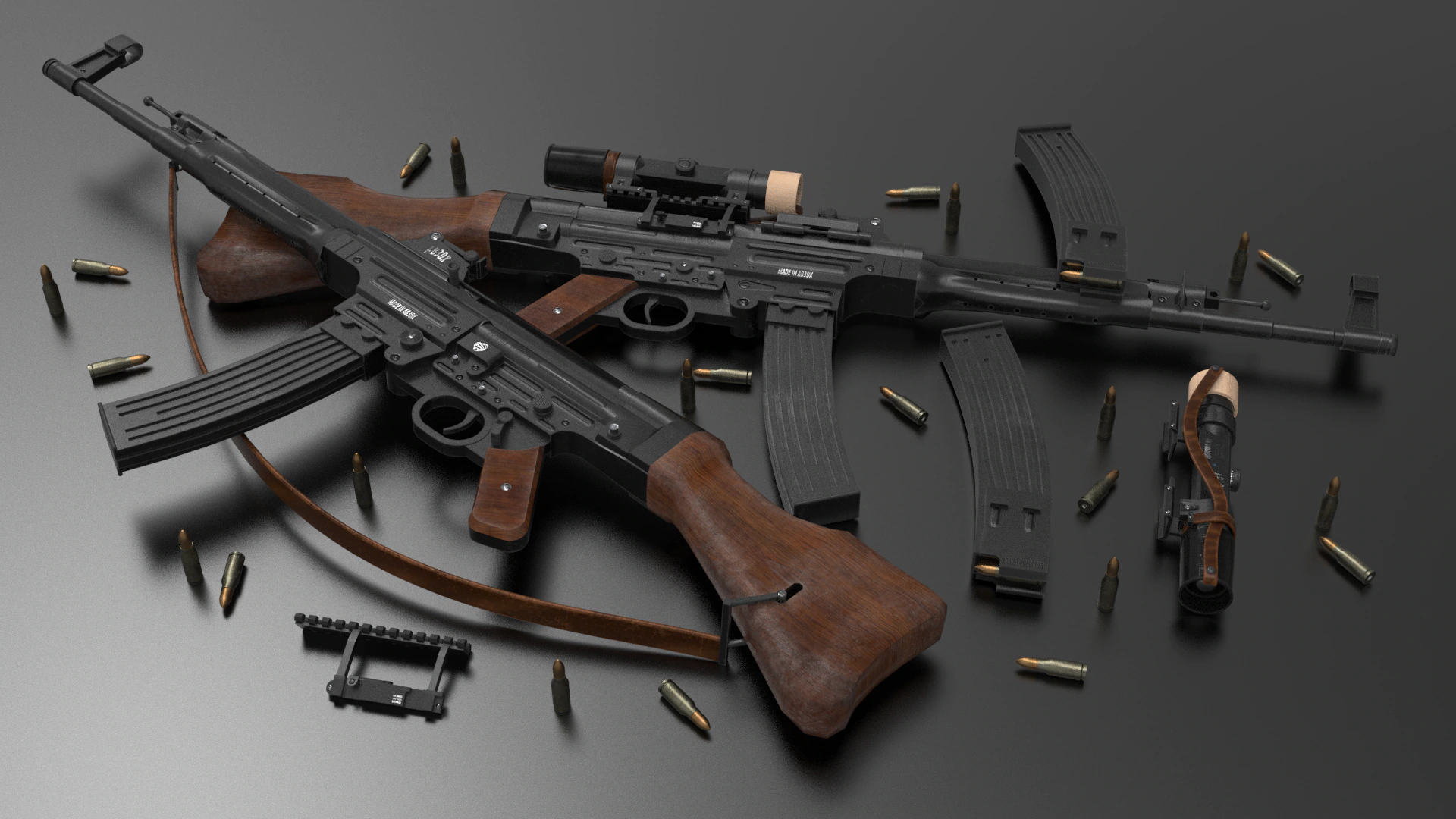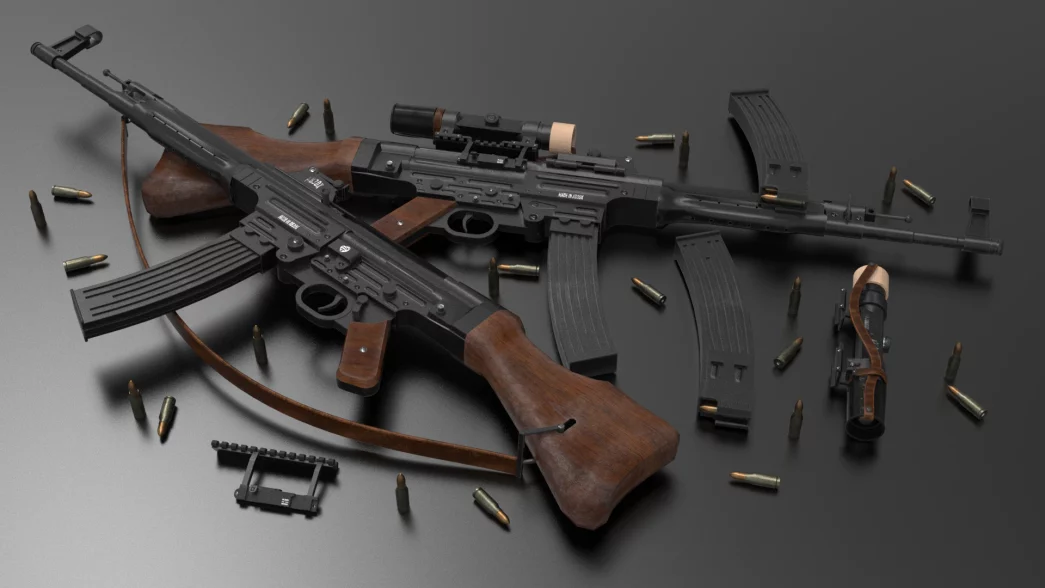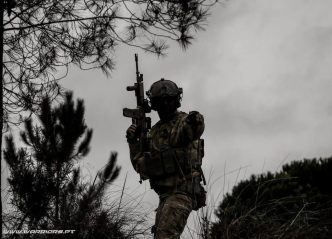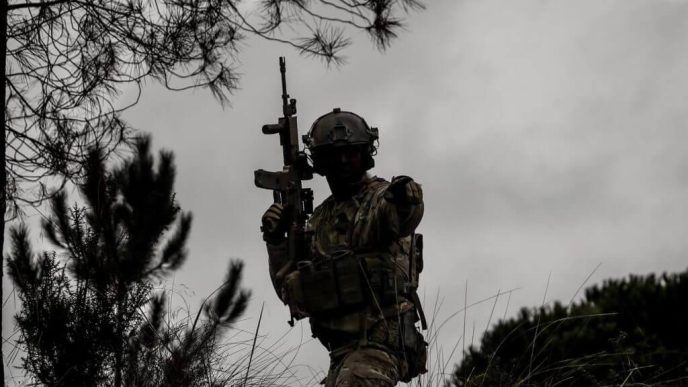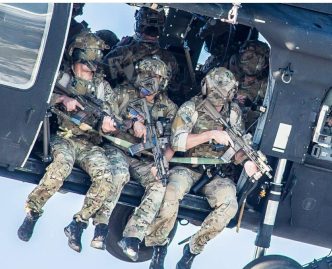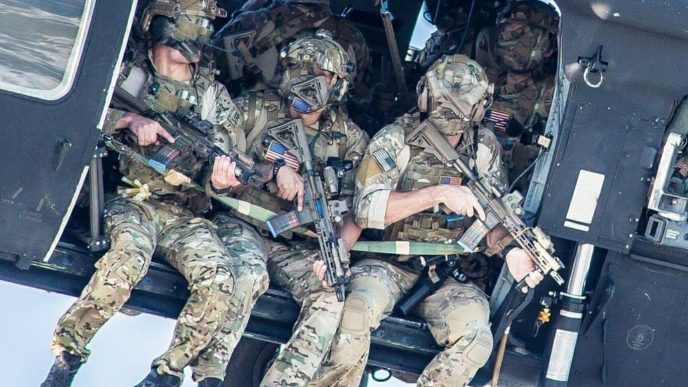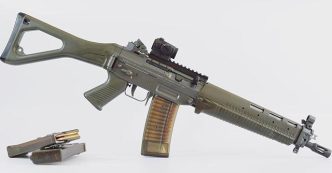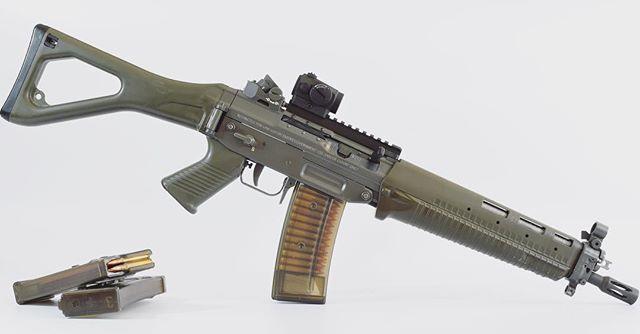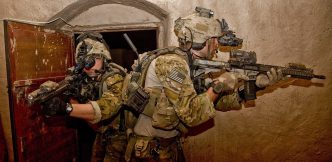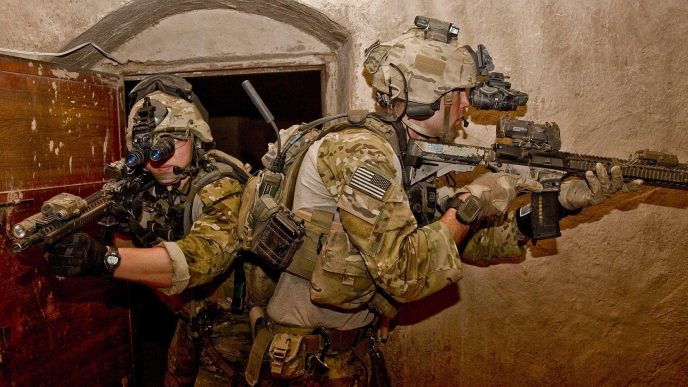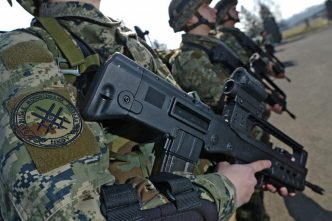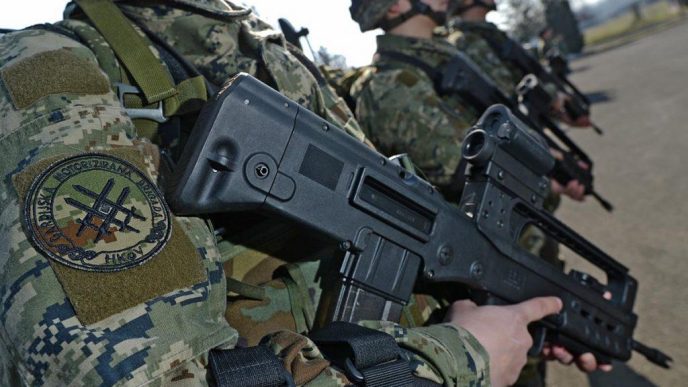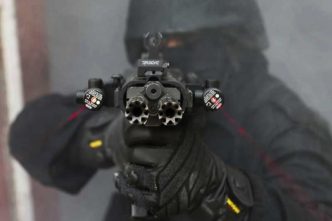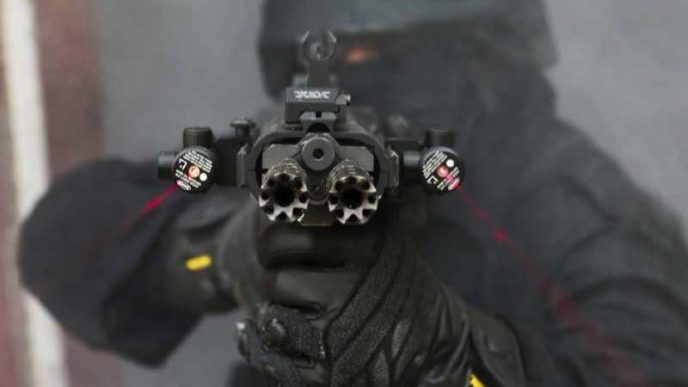The Sturmgewehr 44 is an iconic weapon deployed in the final days of World War II to alter the course of the war and provide Nazi German soldiers with a more reliable and powerful alternative to the Karabiner 98k rifle. Developed during World War II by the renowned designer Hugo Schmeisser, the rifle, also known by its early designations as the MP 43 and MP 44 (Maschinenpistole 43 and 44), marked a significant improvement over its predecessor, the Maschinenkarabiner 42 (H).
Introduction
Chambered in 7.92×33 mm, the Sturmgewehr 44 (StG 44) emerged as a true game-changer, but its arrival was belated and in insufficient quantities to alter the battlefield dynamics. The StG 44 left an indelible mark on firearm design during World War II, standing as the pioneering prototype of the first successful assault rifle. Its innovative features, which included utilizing an intermediate cartridge, enabling controllable automatic fire, adopting a more compact design compared to traditional battle rifles, and delivering a higher rate of fire, completely revolutionized the landscape.
This transformative shift in design was spurred by the recognition that most enemy engagements unfolded within a few hundred meters, rendering the long-range capabilities of other rifles, originally intended for distances exceeding a thousand meters, largely redundant.
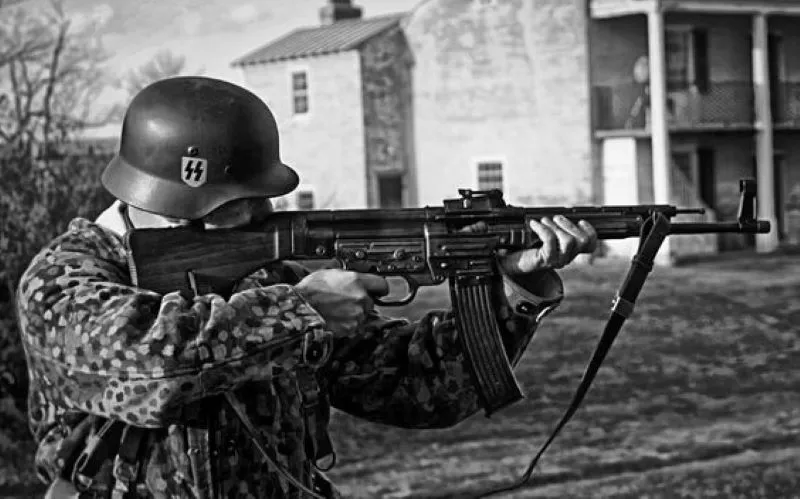
The StG 44 excelled in its designated role, particularly on the Eastern Front, where it markedly augmented the volume of firepower in comparison to standard infantry rifles. Its influence extended far and wide, most notably leaving an indelible imprint on the development of the Soviet AK-47, which made its debut just two years following the conclusion of World War II. The legacy of the StG 44’s design still resonates profoundly in contemporary assault rifles, which have now become the global standard for infantry weaponry.
History
The development commenced amidst the Nazi campaign to conquer the Soviet Union in 1941. By late 1941, the then-primary weapon of Nazi soldiers, the dependable bolt-action Karabiner 98k rifle, faced challenges when pitted against the array of Communist small arms.
This formidable assortment featured menacing adversaries such as the PPS and PPSh-41 submachine guns, the Tokarev SVT-40 semi-automatic rifle, the ever-reliable Mosin Nagant bolt-action rifle, and even the distinctive Degtyaryov DP-28 light machine gun. The Wehrmacht urgently required a new small arm. Consequently, the development task was assigned to two firms, Walther and Haenel, with some accounts suggesting their involvement as early as 1939.
Haenel emerged as the victor, owing to the dedication of Hugo Schmeisser’s development team. At the core of their research and development lay the creation of a weapon optimized for engagements within a 300-meter range. This endeavor resulted in the Mkb 42, which entered limited production, yielding between 10,000 and 11,833 units. It underwent field trials on the Eastern Front.
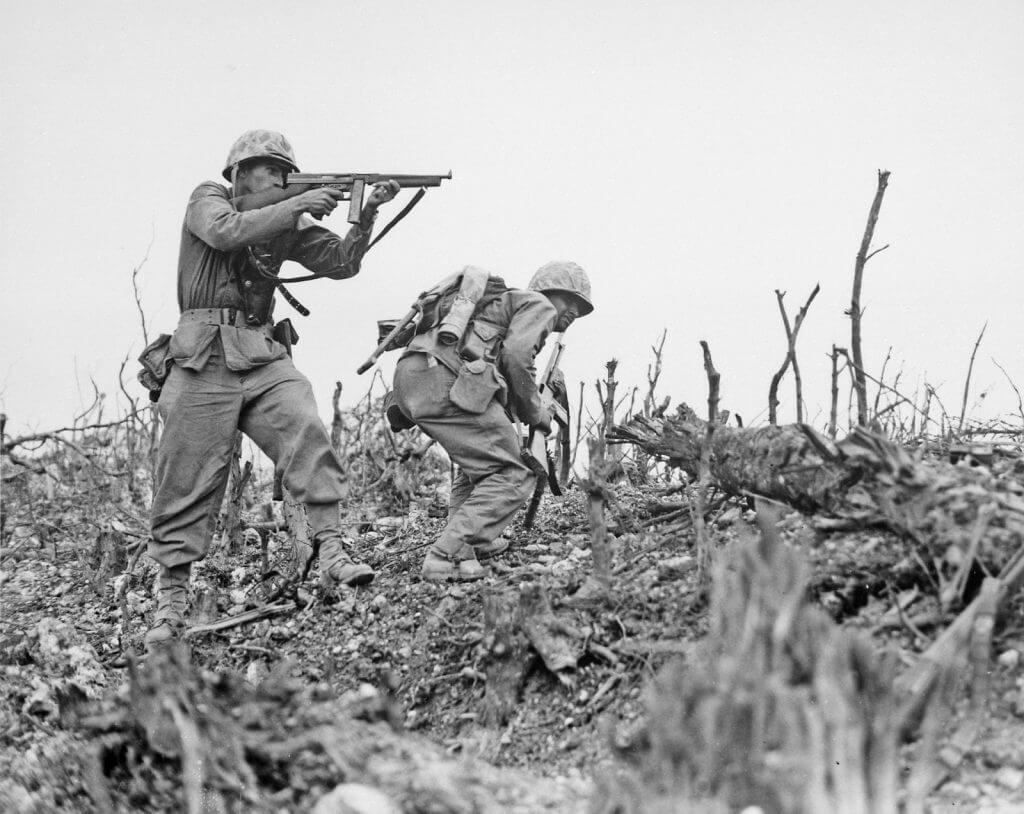
This innovative “machine carbine” was chambered for the full-powered 7.92 mm Kurz round, developed in 1938, and represented a departure from conventional designs. Fabricated with a stamped steel body reinforced by a wooden stock, it functioned on gas and provided selective fire capabilities through a tilting bolt mechanism.
Subsequent enhancements gave rise to the improved MP 43, prepared for widespread adoption. However, the tumultuous nature of the Wehrmacht’s procurement system and the ever-shifting tides of war hindered its deployment. Only in late 1944, specifically on October 22, did Adolf Hitler personally christen the impressive weapon with its iconic name: the Sturmgewehr 44 (German for “Assault Rifle 44”). The name change was probably due to propaganda reasons. Production commenced earnestly at Haenel, Walther, Mauser, and Oberndorf-am-Neckar facilities.
Nevertheless, it proved to be too little, too late. 425,977 StG 44 rifles were manufactured, but this quantity was insufficient to alter Germany’s ultimate fate. The StG 44 had flaws, including susceptibility to overheating due to its futuristic stamped steel appearance, adversely affecting the barrel assembly and foregrip. Soldiers utilizing the Sturmgewahr 44 had to resort to wearing mittens or gripping the magazine well when firing.
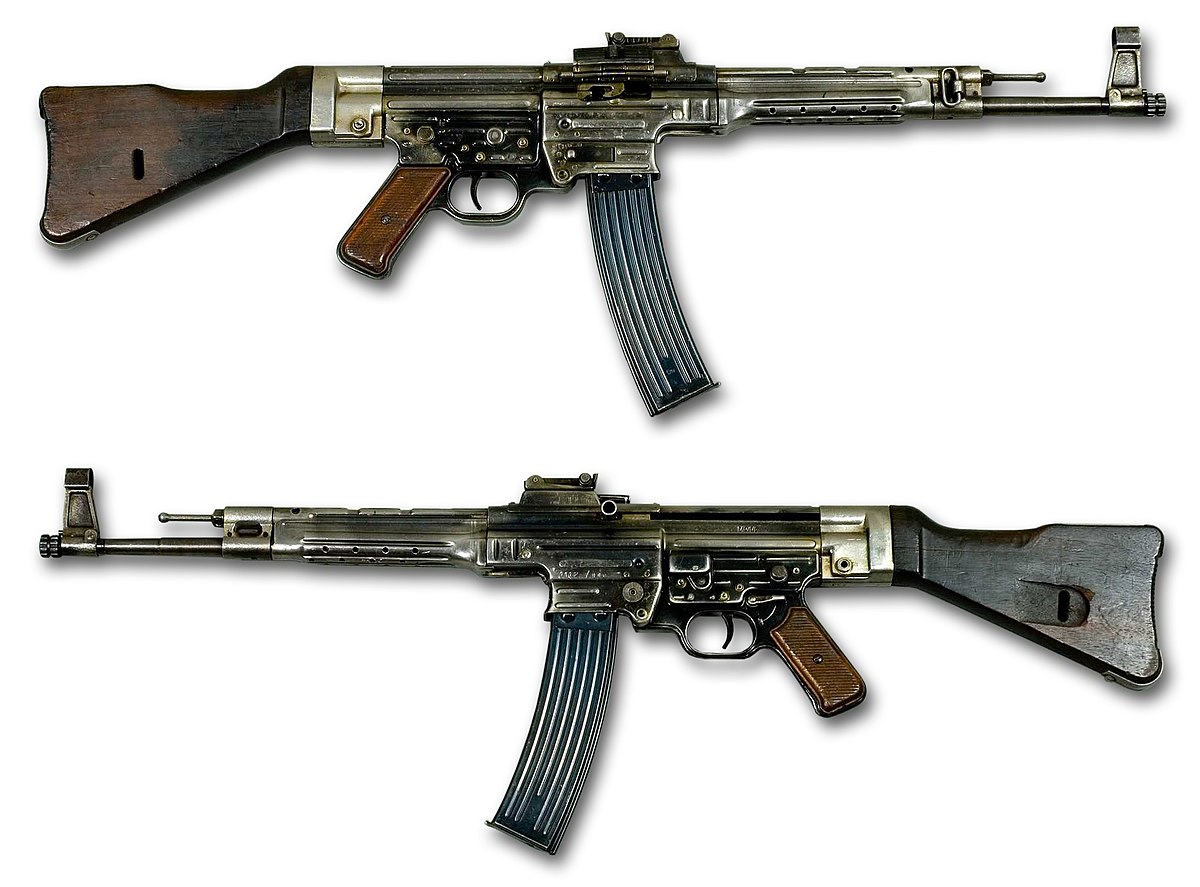
The rifle’s susceptibility to jamming in case of stock damage was heightened by a recoil spring extending into the wooden stock. Additionally, the limited sighting range could have been improved by relocating the rear sight closer to the stock. Furthermore, the curved 30-round magazine suffered from a faulty spring, often detaching from the lower receiver as it emptied.
Despite these issues, the StG 44 featured a unique design element: the section of the lower receiver housing the pistol grip could swing out from the magazine well. This distinctive feature streamlined the cleaning and reassembly process.
As the Cold War unfolded, the Sturmgewehr 44’s reputation waned, relegating it to an obscure status as a last resort. However, its enduring form and function left an indelible mark on small arms development in both the East and West.
The various components of the StG 44 went on to influence some of the most successful modern rifles, including the AK-47 (incorporating the barrel assembly, front and rear sights, and magazine), the FN FAL (initially chambered for the Kurz round), the M16 (encompassing the breech and lower receiver), and the Heckler & Koch G3 (including the stock, upper and lower receiver, and pistol grip, although the Sturmgewehr 45 prototype bore more similarities to the G3).
Users
Substantial quantities of StG 44 rifles found their way to far-flung destinations, including conflict zones in Asia and Africa. It is believed that StG 44s chambered in the original Kurz rounds were manufactured in Argentina during the 1950s. Some even reached the United States as war trophies brought home by U.S. soldiers. An intriguing incident unfolded in December 2012 when a woman from Hartford, Connecticut, contemplated surrendering a StG 44 to the police in exchange for a gift certificate. Still, the firearm’s significant value dissuaded her.
Variants
| Type: | Description: |
| MKb 42 | Prototypes for the series. |
| MP 43 | The original production model was designated as a “Maschinepistole” (‘MP,’ for submachine gun). |
| MP 44 | An improved version of the MP 43 and the definitive production model was later relabeled as the StG 44. |
| Krummlauf (attachment) | This accessory is an attachable, curved barrel extension that enables the StG 44 to fire around corners without exposing the operator. It was initially designed for use inside armored vehicles but could also function as a standalone component. |
| Gerat 06 | A weapon featuring components from the MP 43, StG 44, and MG-42 machine gun, but it did not enter production. |
| CB-51 | An improved version of the MP 43 and the definitive production model was later relabeled as the StG 44. |
| Franchi LF-59 | An Italian assault rifle that incorporated the action and several other components from the Sturmgewehr 44. A carbine version, the LF-58, was also developed, but neither was accepted into service. |
| M44 | The Yugoslav Army’s designation for the StG 44. |
| StG 45 | A simplified variant developed in 1945 that featured a roller-delayed blowback firing mechanism. It later influenced the Spanish CETME Modelo A rifle and, subsequently, the Heckler & Koch G3. |
Several reproductions were also manufactured for civilian use; however, these lack selective fire capability and were not marketed for military use.
Legacy
StG 44s have left their mark through photographs, utilization, and capture in various conflicts, including the Arab-Israeli Wars, the Vietnam War, and violent outbreaks in East Africa. In the notorious Battle of Mogadishu in 1993, many rifles carried by Somali gunmen turned out to be Sturmgewehr 44s, taking U.S. troops by surprise who had expected AK-47s. Caches of StG 44s emerged in Iraq and Afghanistan during the 2000s, occasionally appearing in insurgents’ hands in those regions. In 2012, Syrian rebels looted a substantial stash of Sturmgewehr 44s, even releasing footage of their audacious exploit.
The Sturmgewehr 44 has experienced a revival among American gun collectors. Since 2012, U.S. start-up firearm manufacturers and distributors have offered replica StG 44s as sporting rifles. Demand for these historical relics has been robust, prompting the production of StG 44 replicas in various calibers, including 7.62 and 5.56 (.223).
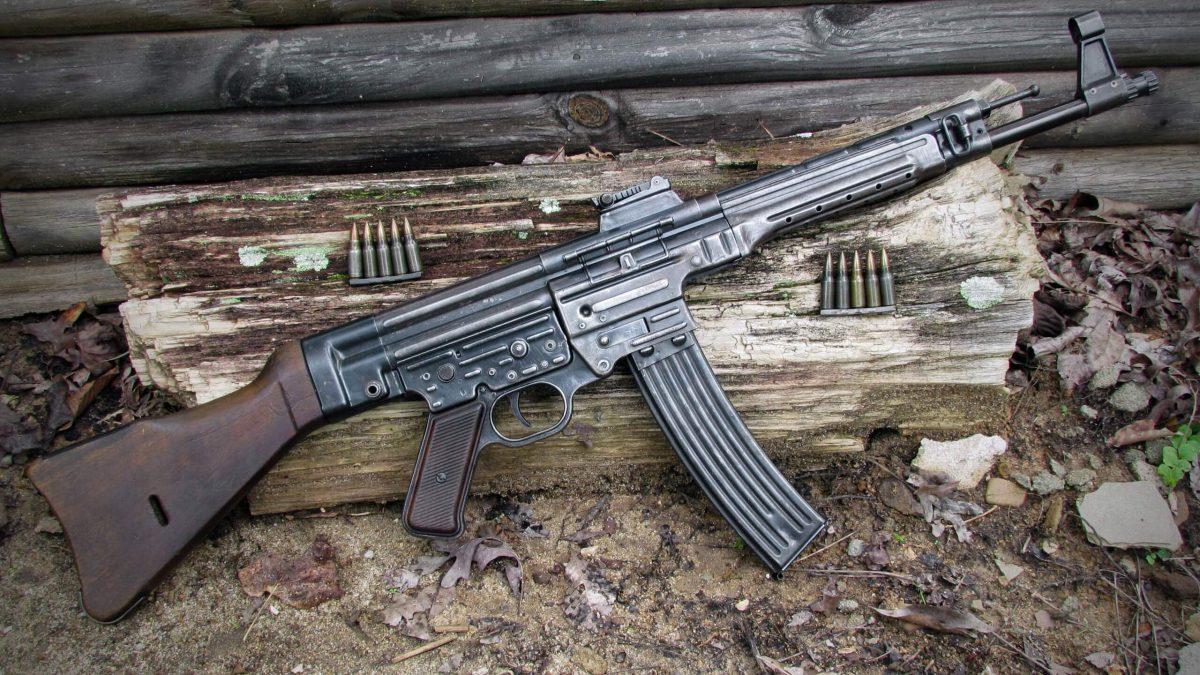
The allure of the Sturmgewehr has also made a comeback in its homeland. In recent years, the German bespoke gun shop EL BE Tac has marketed a collection of replica Wehrmacht and Waffen SS semi-automatic weapons, prominently featuring the StG 44. Seventy years after it entered mass production as a groundbreaking battlefield innovation, the StG 44’s future appears to be secured in the private gun collections of enthusiasts. This represents another unexpected twist in the long and eventful journey of the first successful assault rifle.
Technical specifications
| Country of origin: | Nazi Germany |
| Manufacturer: | C. G. Haenel Waffen und Fahrradfabrik Sauer & Sohn CITEDEF (post-war) Steyr-Daimler-Puch |
| Caliber: | 7.92 x 33 mm |
| Entered service: | 1944 |
| Weight (unloaded): | 5.2 kg |
| Length: | 940 mm |
| Barrel length: | 419 mm |
| Muzzle velocity: | 650 m/s |
| Cyclic rate of fire: | 500 rpm |
| Practical rate of fire: | 40 – 100 rpm |
| Magazine capacity: | 30 rounds |
| Sighting range: | 800 m |
| Range of effective fire: | ~ 200 m |
| Price: | 70 ℛ︁ℳ︁ (1944) €550 current equivalent |
